Reading (Phonetic) - Books
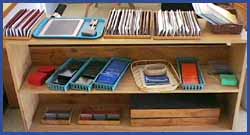
PLACE IN THE CURRICULUM:
-
- When the child is able to read the phonetic reading material
already described, he is ready for more difficult phonetic material.
This material does not need to be color coded. Any attractive
colors can be used.
-
- The children will now be ready to read phrases and sentences.
The words "the" and "a" will be taught as
sight words. Except for these two words, all words in the sentences
must be phonetic. Any length of phonetic word is used. It is
not possible to write very many interesting sentences of high
quality using only 3-letter words. The child can read the simple
words he has worked with through the blue boxes. When preparing
the material, the following points must be kept in mind:
-
- 1. There must be plenty of material at this stage. The children
need much practice.
-
- 2. All sentences must be written in correct English.
-
- 3. At first, the sentences must be short, simple sentences.
A simple sentence contains only one finite verb.
-
- 4. The sentences must be written in such a way that the meaning
is easily grasped. They must be the kind of sentence used in
normal conversation. This type of sentence is easy for the child
to read.
MATERIAL:
-
- 1. Small books with a picture on one page and a phrase on
the opposite page, e.g., a muffin pan (A phrase does not have
a capital or a period.) Each book has about six phrases.
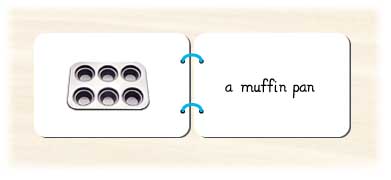
- 2. Small books with one picture on a page and a simple sentence
opposite:
-
- Ex: Tom Runs fast. Tim has a rod. The pan is black. Each
book contains about six sentences.
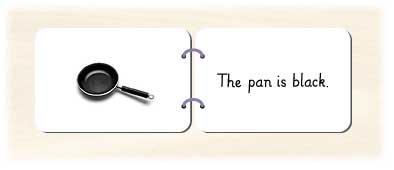
-
- 3. Books with sentences which are a little longer.
-
- The frog swims in the pond. Tibet is the habitat of the yak.
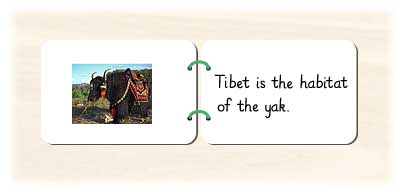
- 4. Several sets of picture cards with separate matching sentence
cards. For example, one set can focus on the verb.
-
- Brandon hugs Eric. Eric sits on a rock. Brandon, Mat and
Eric run fast. Eric can swim. The sun sets. Another set can draw
attention to the noun. Ann has a red dress. Ann has a red hat.
Ann has red socks. Ann has a red ribbon. Ann has a long dress.
(In this set, the picture is the same but the part mentioned
is colored red.)
-
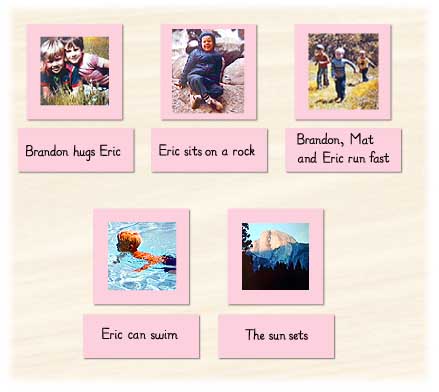
- 5. Little story book with a picture on one page and a short
simple sentence or two opposite.
-
- Six big dogs hunt a red fox in the glen. The fox runs fast.
The dogs run just as fast. The fox trots up a slanted log on
the pond. The fox backtracks and jumps off the log. It is hidden
next to a stack of logs. The fox can rest. The dogs huff and
puff. The dogs sniff and sniff but cannot spot the fox. The tracks
are lost. At last the sad dogs trot off. The fox is glad.
-
Presentation:
-
- The teacher shows each child how to use the material as he
is ready for it. He then helps himself and reads as much as he
likes.
-
Note:
-
- Most children get excited when they find that they can read
the phonetic material. The teacher must make them feel capable.
The children should be allowed to read as much as they like,
even to the neglect of other subjects. If they read a good deal
at this stage, they should become fluent readers in a fairly
short time.
-
- It must be realized that children sound out the words for
quite a long time. It is usually a mistake to make them sight-read
before they do so of their own accord.





